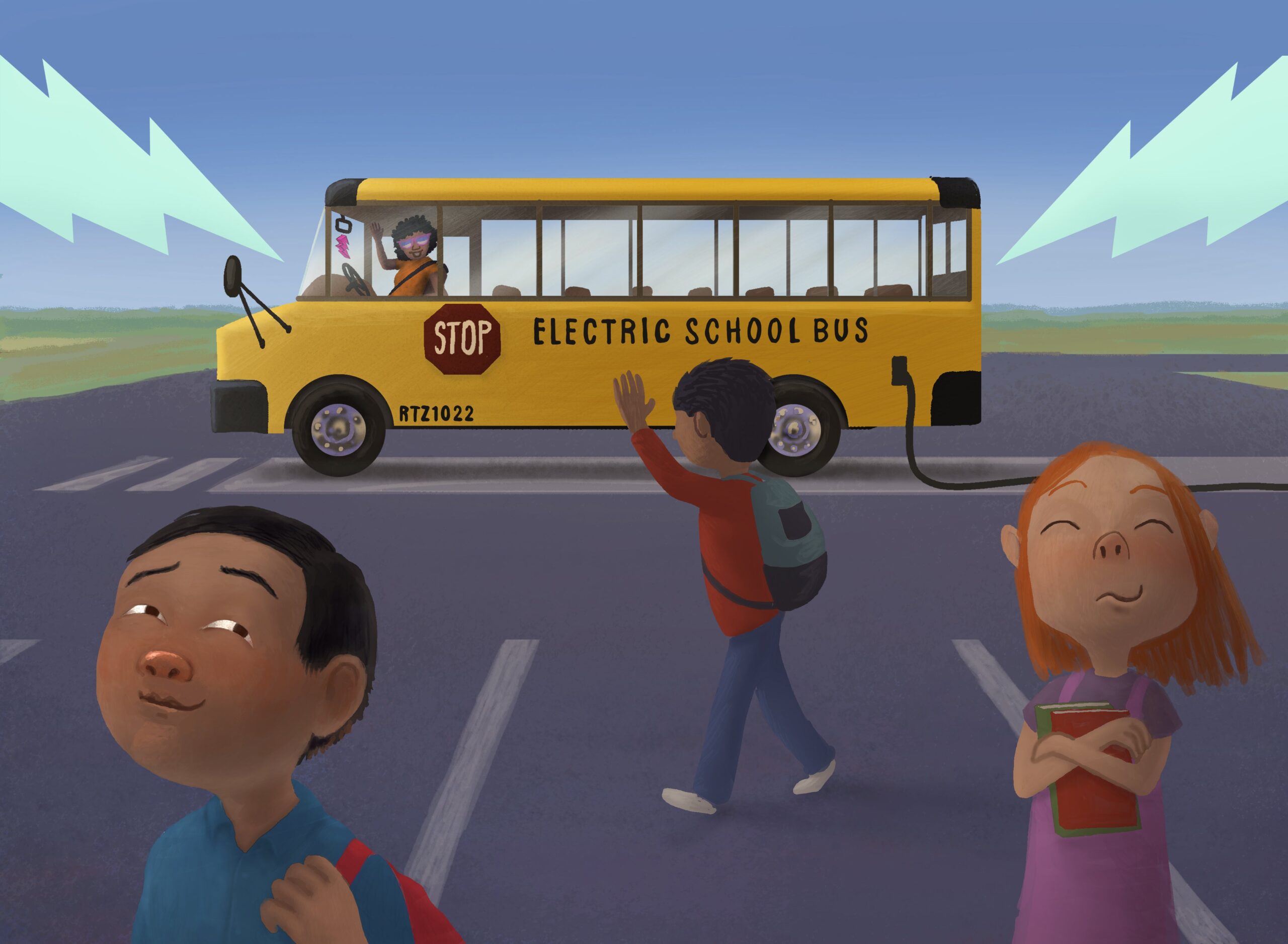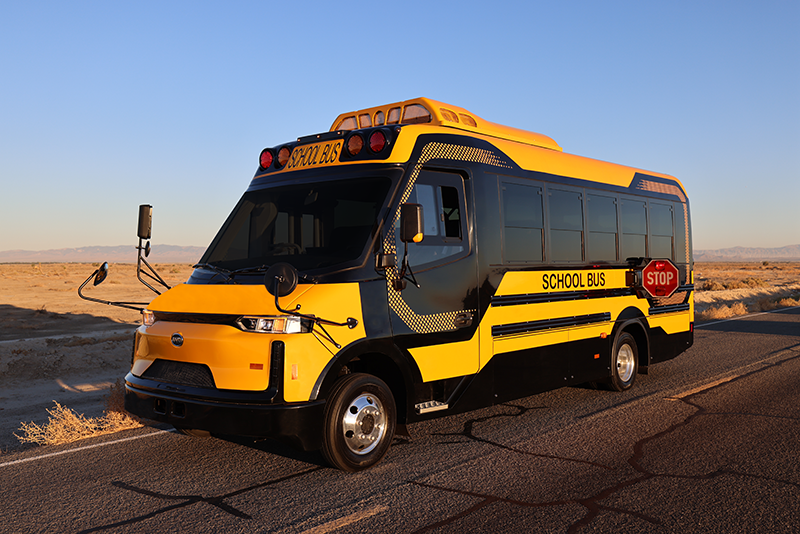The School Bus is About to Become More Magical in Maryland
Maryland looks to an electric ride for its youngest residents.
Everyone remembers the Magic School Bus and Ms. Frizzle’s lessons about the wonders of science — covering everything from a journey inside the earth to how seeds grow, and the anatomy of stars. But there was a critical installment these young scientists were missing: a deep dive into the dangers of the very vehicle they rode. The power diesel combustion engines provide comes with a heavy price, producing one of the most toxic forms of air pollution for humans. Ms. Frizzle’s escapades aside, the truth is that diesel school buses pose grave risks to the health of their young riders, bus drivers, and the very climate within which all of our lives unfold.

Electric school buses would benefit the 25 million school children who ride the bus to school every day in the United States. (Neal Sharp for Earthjustice)
Fortunately, Maryland has the opportunity to create some magic of its own, improving the health of kids in the state simply by electrifying the 7,200 school buses that bring them to school. Under the Utilities Electric School Bus Pilot Program, the magic electric school bus can get kids to school without exposure to harmful pollutants. Not to mention saving school districts money, creating jobs, protecting the climate, and helping communities with a backup energy supply. Not many programs can achieve so much for so little.
Diesel Buses Harm Kids in Maryland
Every day, more than 650,000 children in Maryland ride to school on a school bus powered by diesel fuel. These students are routinely exposed to harmful pollution from exhaust fumes generated from diesel-powered vehicles including particulate matter, hydrocarbons, and nitrogen oxides. Studies have shown that a child riding inside a diesel school bus may be exposed to as much as four times the level of diesel exhaust as someone riding in a car ahead of the bus. Diesel emissions increase the lifetime risk of cancer, asthma, and heart disease.
The effects of diesel emissions are even more dangerous to children than adults. Children’s lungs, hearts, and other organs are still developing, and children breathe two times more air per pound of body weight than adults do. Damage from diesel fumes can result in permanently reduced lung function and lifelong health problems. School children and bus drivers are constantly exposed to these airborne toxins while waiting for, waiting in, and riding diesel school buses. A recent study suggests that diesel exhaust doesn’t just aggravate asthma — it may cause asthma. The study in the Journal Environmental Health Perspectives suggests that fine particulates found in diesel exhaust can affect individuals’ immune systems and can cause asthma in otherwise healthy people.
Nearly one in 10 children in Maryland suffers from asthma with a higher rate in children of color. And this public health problem takes an economic cost too: in 2020 asthma-related emergency room visits and hospitalizations in Maryland added up to $49.5 billion in healthcare costs.
Electric Buses Save School Districts Money and Build Energy Resiliency
Electric school buses are also more cost-efficient than their diesel counterparts because of their lower operational and maintenance costs. The U.S. Public Interest Group (US PIRG) determined that the lifetime fuel, operation, and maintenance savings of electric school buses compared to diesel buses are around $170,000 per bus. The savings achieved through electric buses can then be reinvested into our schools.

BYD’s “Achiever” electric school bus. This model is made in California by union workers. (Courtesy of BYD)
Electric school buses also have a major superpower for our energy grids: they can store so much energy that they essentially function as rolling batteries, providing stability and resilience for our energy grid and further helping our transition to clean energy. They can store energy and send it back into the grid when it’s most needed, reducing costs for utilities and preventing costly disruptions from power outages.
This Magical Future is Before the Maryland Commission
The Utilities Electric School Bus Pilot Program was approved by the General Assembly last year and will provide up to $200 million in funding for school districts. This bucket of funding should jumpstart the transition to electric school buses. Utilities are an essential part of the pilot program, and as in many things, the devil is in the details.
Baltimore Gas and Electric (BGE) filed the first proposal to establish an electric school bus pilot program in its service territory. While the BGE proposal is an exciting first blueprint, it has one obvious flaw — it fails to deliver enough clean air relief to low-income communities and communities of color. While the legislation states that a pilot should prioritize these communities, BGE’s proposal only allocates a fifth of the program’s resources to underserved or health-impacted communities.
Those funds should be doubled. Rather than only allocating 20% of the resources available to those who need the aid the most, the Commission should direct that at least 40% of resources go to Baltimore’ underserved communities. Since BGE’s application is the first in the state, it is critical that the Commission sets the right precedent. Expanding the benefits of these programs to underserved and vulnerable communities will help ensure that no Marylander is left behind in the clean energy transition.
Maryland is building a magical future for its students, one ride to school at a time. As Ms. Frizzle would say, “Bus, do your stuff!”
Earthjustice’s Clean Energy Program uses the power of the law and the strength of partnership to accelerate the transition to 100% clean energy.